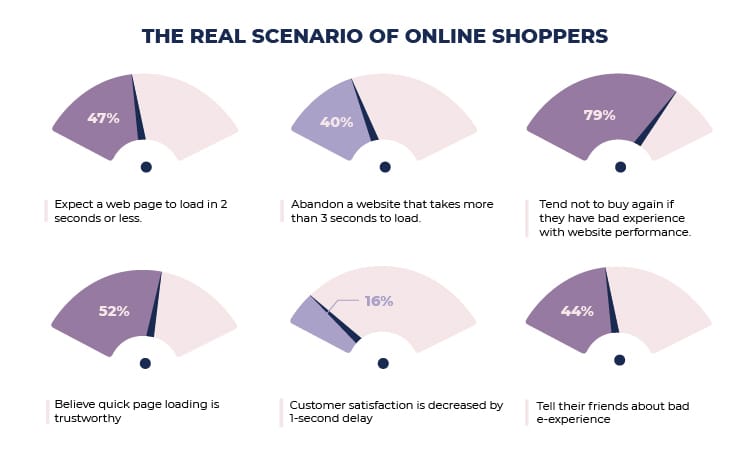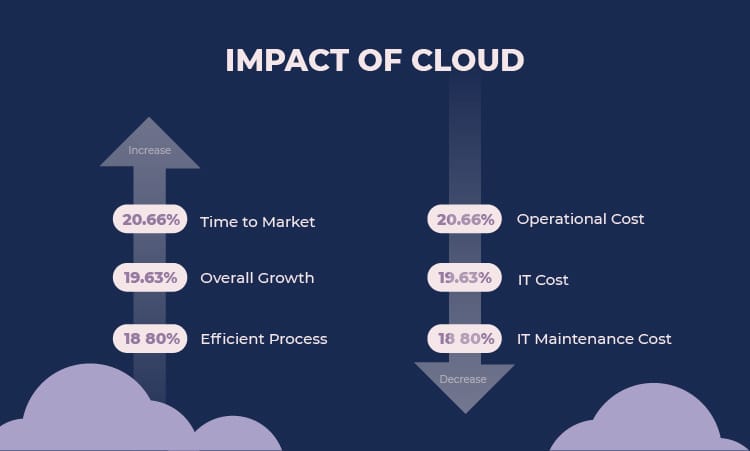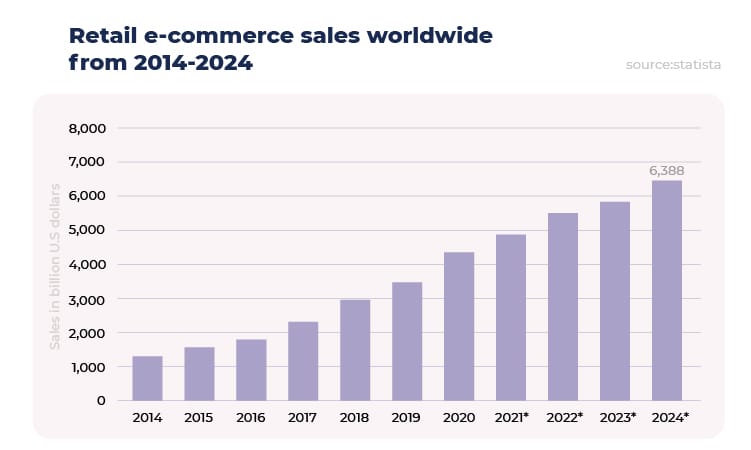5 Mind-Blowing Benefits of Cloud Computing in the Ecommerce World
October 14, 2021
We all look forward to buying our favorite kitchen appliance or the latest smartphone during Amazon’s Prime Day or Flipkart’s Big Billion Day at a heavy discount. Such mega sales last for a few days mostly during the festive season and millions of potential buyers flock to these e-commerce sites.
The visitors many times experience deterioration in speed and overall experience. User Experience (UX) derives the overall success or failures of such e-commerce sites as superior UX results in more sales and repeat customers, while dismal UX results in disgruntled ones.
E-commerce businesses generally undergo the following pattern:
- Seasonal or a temporary spike in demand and hence traffic on their site
- UX and ease of navigation is the key to a repetitive sale and customer satisfaction
- Faster time to market and dynamic pricing
- Pressure to reduce the cost of operations since expenses of running tech infrastructure is a major cost for e-commerce companies
- Ensuring secure and faster end to end e-commerce transactions right from search to making payments online
Availability of IT infrastructure without any compromise on the UX and security has always been a challenge for any e-commerce organization.
These challenges that the Ecommerce world faces, can be largely addressed by Cloud computing. Let us discuss the top mind-blowing benefits of Cloud Computing.
1. Better Speed

Speed is one of the biggest factors that determines whether visitors will stay on your website or move to the next option. 40% of visitors are likely to abandon a website if it takes more than 3 seconds to load.
A visitor dissatisfied with speed is not only less likely to buy from the same site but will also share their bad UX in their circle. As many as 44% of online shoppers share their bad UX with their friends.
As mentioned before, most e-commerce sites experience a sudden spurt in traffic for various reasons, resulting in slowing down the speed considerably or making the site unresponsive.
The solution to this critical problem is migration to Cloud computing. It provides larger bandwidth, improved computational ability, and higher storage space.
An e-commerce site with excellent speed not only augments UX but results in positive sales.
2. Cost-Efficient

For most e-commerce companies, especially those who have just started to build their presence, the cost can be a major factor.
With the increased penetration of high-speed broadband, mobile Internet, and the advent of technologies like Cloud computing, organizations have today an option to choose “pay as you consume” delivery models. This allows organizations to reduce capital expenditure on IT infrastructures such as hardware, utilities, facilities, and a large data center.
Companies also do not need large IT teams to handle data centers of cloud operations, as this can be outsourced to the cloud provider. All this results in huge cost savings, which can be invested in other areas for business growth such as in SEO Services.
3. Stability
The USP of most E-commerce sites is faster time to market and dynamic pricing. Consumers keep returning to these sites for new products or services and discounts. Also due to increased access to the internet especially among the youth, many keep surfing the websites more frequently.
Under normal circumstances, the web traffic is as anticipated by the e-commerce sites. But when a new product is launched, discounts are offered or a new advertisement campaign is run on an e-commerce site, it can translate into unanticipated traffic spikes. This may affect the site stability adversely.
The e-commerce sites can prepare for such traffic upsurges by hosting their IT infrastructure in the data centers of these cloud services and have stable and predictable performance.
4. Scalability
The dynamic needs of e-commerce sites can be catered to by Cloud Computing. It allows the companies to build their e-commerce presence as swiftly as their growth in business.
Depending on the website traffic, seasonal spurts and other business challenges, cloud computing allows companies to upscale or downscale. It gives e-commerce companies a scalable architecture, by the market scenario.
There is no need to buy extra equipment or hire new staff for maintenance services. With cloud computing, all resources can be acquired on-demand.
5. Safety and Security
Data Privacy, Data Protection, and Data Analytics
Convenience and ease are among the topmost reasons why consumers prefer e-commerce. But convenience should not come at the cost of security and safety. Trust is paramount and if breached, a customer is never set to return.
Everyone loves a customized shopping experience which makes personalization one of the main driving forces behind the robust growth of e-commerce. Customers welcome personalized information such as precise product recommendations to help in making informed purchase decisions, targeted mails to know the next big sale or offer, and so on.
To ensure this customized approach, e-commerce players typically have their customer’s socio-economic data and buying patterns. Protecting this customer data and its buying behavior requires a very robust, reliable, and secure IT infrastructure. And if this data is poorly protected, potentially sensitive PII (Personally Identifiable Information) can be exposed to a number of cybersecurity threats.
There are usually three ways an e-commerce setup suffers a data disaster: human error like accidental deletion or modification, cybercriminals, and integration issues with third-party apps. Cloud computing helps greatly in overcoming these issues.
Cloud computing ensures superior security measures such as PCI-DSS certificate hosting and also protects the E-commerce sites from DDoS (Distributed Denial-of-Service) attacks. The majority of the Cloud Service Providers also offer various tools for running analytics, and various encryption methodologies to ensure security.
With cloud computing, consumers can trust that their payment details and other PII are also transmitted securely.
Conclusion:
Cloud Computing was already being used phenomenally in the E-commerce world. The COVID-19 pandemic has further led to a surge in the E-commerce market and the total e-commerce retail sales are expected to reach $5.86 trillion in 2022. This is very heartening both for the e-commerce and cloud computing industries.

But despite its benefits, cloud mitigation by e-commerce companies can be a tricky process and needs proper planning.
E-commerce companies need to first have detailed visibility of cloud usage across the organization. Without a proper plan, understanding the actual need and adopting cloud just for the sake of technology advancement; can rather have undesirable outcomes. It can lead to oversized infrastructure, a shrinking bottom line, and increased TCO (Total Cost of Ownership) for the business.
Nevertheless, as we discussed, the benefits of cloud computing in the e-commerce world clearly outweigh the negatives and there is no looking back for this disruptive technology.
Author Bio:-
Ronak Kothari – He is the founder of Ronkot, a full-service digital and printing agency specializing in web design, development, and digital marketing. With over a decade of hands-on experience in marketing, Ronak helps brands reach new heights.
Keep reading about
LEAVE A COMMENT
We really appreciate your interest in our ideas. Feel free to share anything that comes to your mind.
Our 16 years of achievements includes:
10M+
lines of codes
2400+
projects completed
900+
satisfied clients
16+
countries served




